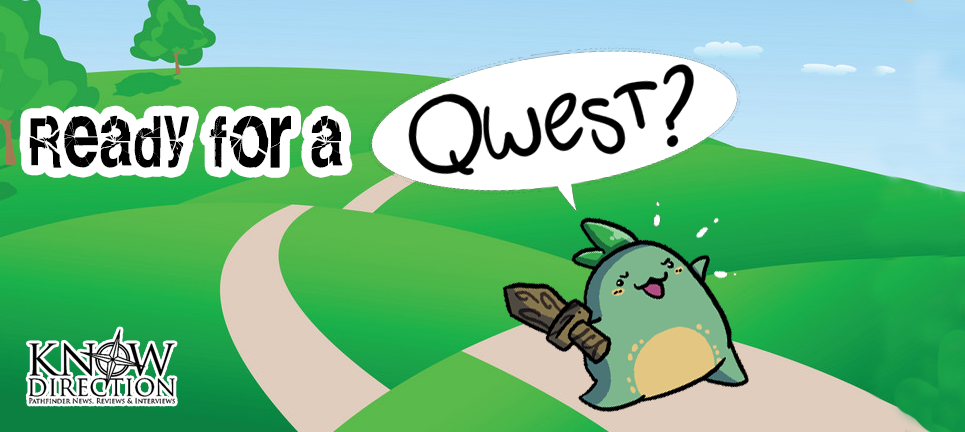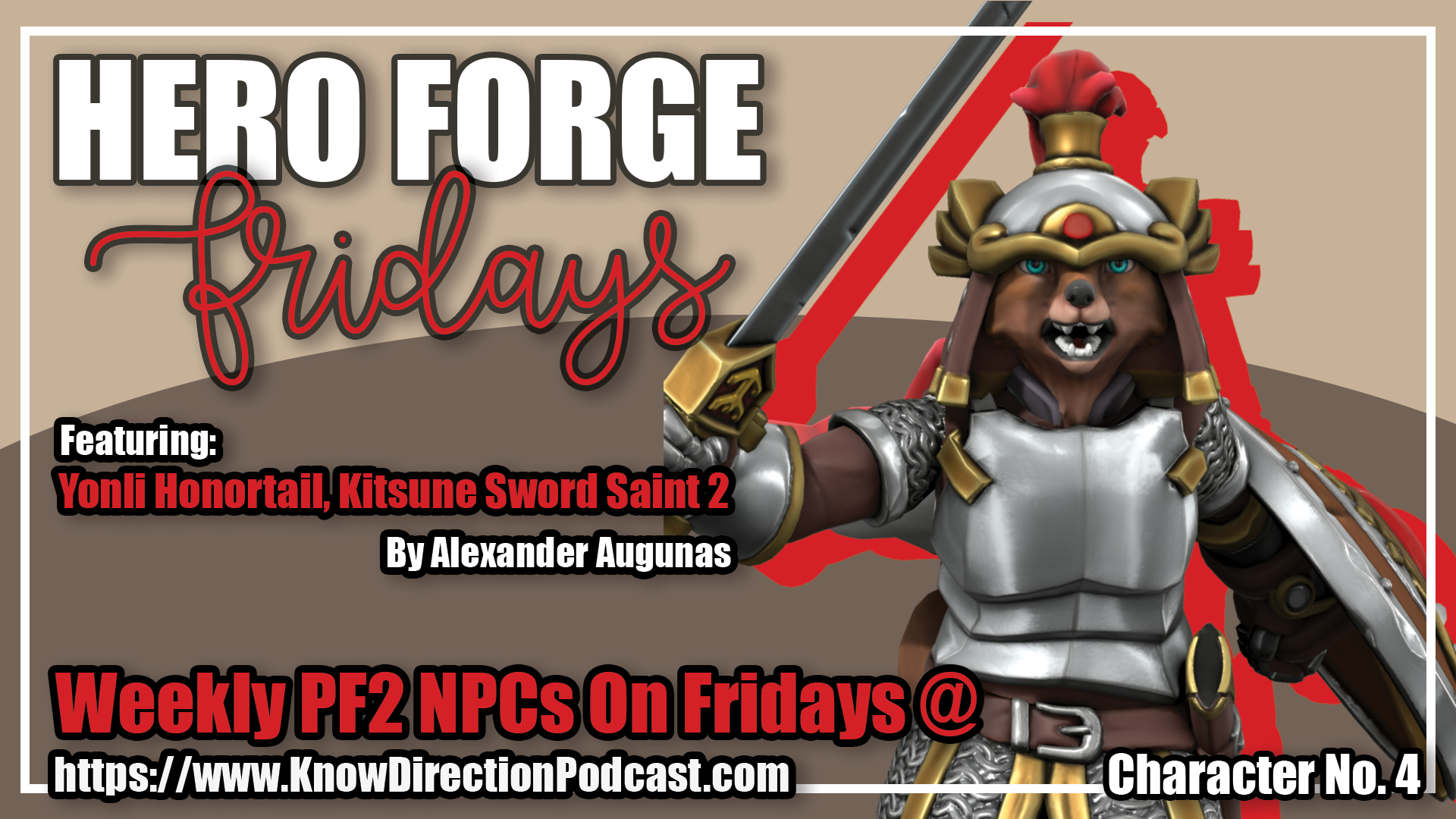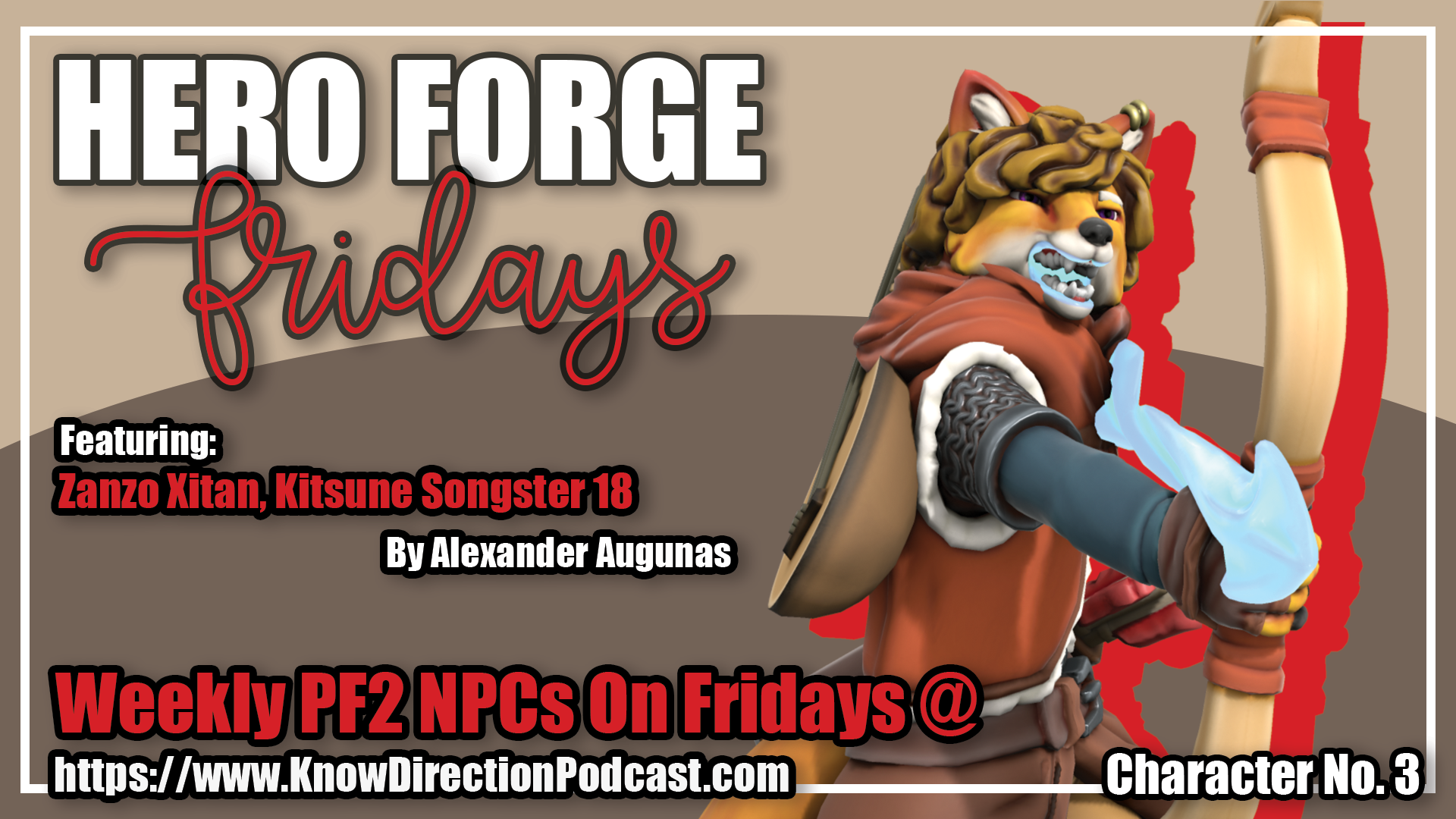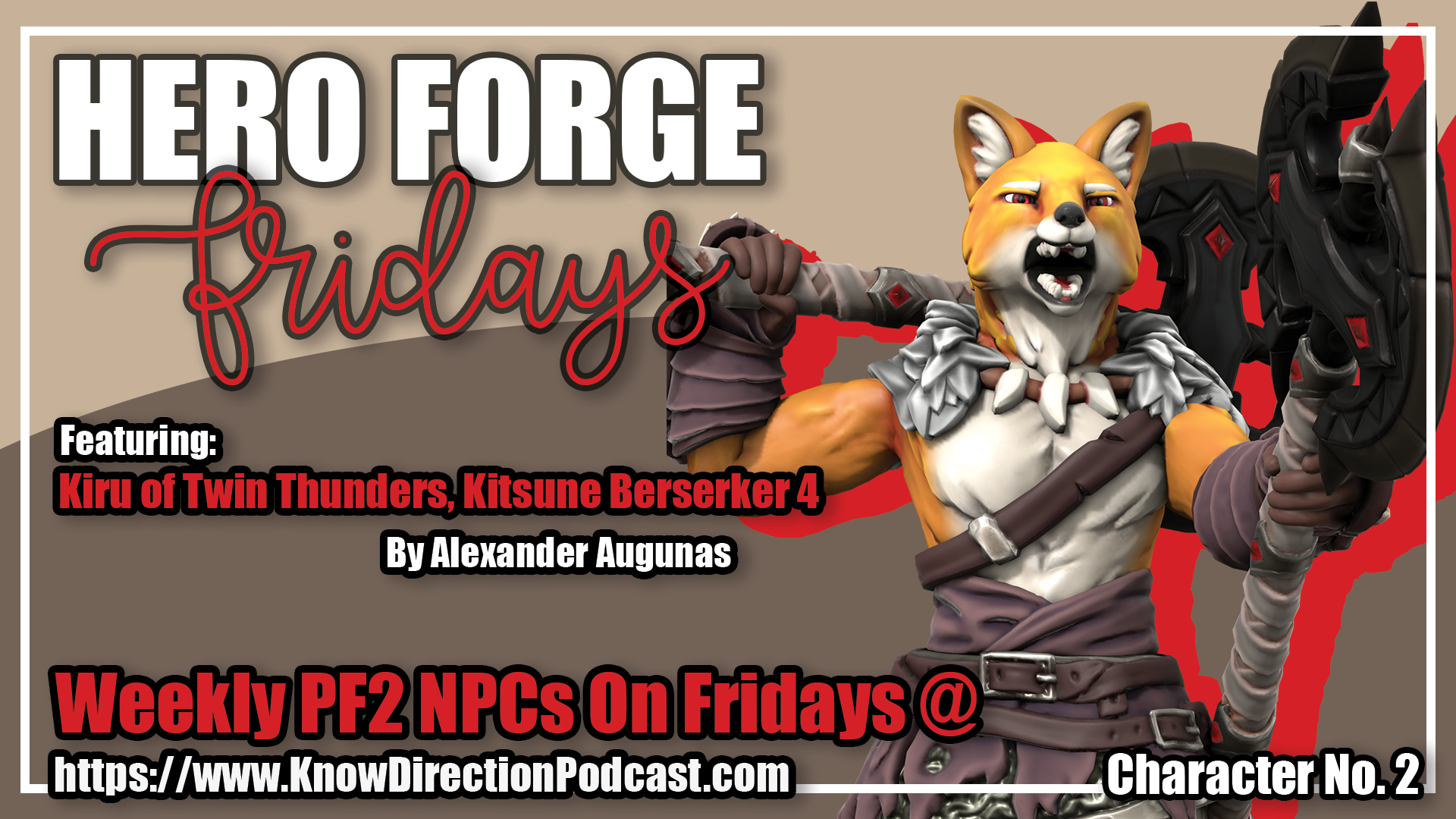Hello and welcome to Iconic Design! I’m your host and 5e dilettante Alexander Augunas, and I thought I would try something a little bit different for today’s installment of Iconic Design. Longtime fans of the series know that I love sharing my personal character builds with my Know Direction Network fam, and I recently played a 5th Edition one-shot with some of my World of Warcraft friends. Since the Know Direction Network doesn’t really do 5th Edition stuff ever, I thought it might be fun to do an Iconic Design on a 5th Edition character.
When I sat down to play this one-shot, it was pretty clear right away which class I should try. While my 5E experience is pretty limited (I played a handful of one-shots way back when the game was first released and haven’t played it much since and have written a Kitsune product for the system), the game is pretty heavily inspired on Dungeons and Dragons’ 3.5 edition, and I played my fair share of that game back in the day. So when I sat down to build my character, I knew I wanted to play something I hadn’t tried before. To me, that was the warlock class, which was added as a core class in 4th Edition. So without further delay, let’s get going!
Character Build
- Race: Tabaxi
- Ability Score Priority: Charisma, Dexterity
- Background: Wanderer
- Class: Warlock 6
- Patron: The Celestial
- 6th: Radiant Soul
- 1st: Healing Light
- Subclass: Pact of the Blade
- Eldritch Invocations: Armor of Shadows, Beast Speech, Thirsting Blade
- Spells
- 3rd: Counterspell, Revivify
- 2nd: Misty Step
- 1st: Comprehend Languages, Cure Wounds, Guiding Bolt, Protection from Evil and Good
- Cantrips: Eldritch Blast, Mage Hand, True Strike
- Patron: The Celestial
Playing the Build
So my goal with this build was to effectively play counterculture to what I would call the “stereotypical warlock,” a character who’s really broody and edgy and follows a patron who’s unquestionably bad or villainous at best. Most of the warlock’s core patrons are things like the Fiend or the Great Old One that definitely paint a non-heroic depiction of the class, so I wanted to try and be counter to that. I wanted to play a paladin without all the baggage of having to follow religious tenants, essentially. This build did a decent job of replicating that.
Since my patron is the Celestial, I got a really nice list of bonus spells added to my warlock spell list that I quickly took advantage of. Guiding Bolt is basically a cleric’s divine nuke, dealing pretty crazy single-target damage for a cleric spell. In Starfinder terms, it’s pretty comparable to a mind thrust spell that requires an attack roll to hit rather than a Will save to negate. I also grabbed cure wounds, another 1st level spell, and the 3rd-level spell revivify from this list. In addition to cure wounds and revivify, the Celestial grants me an ability that basically works like a healing cleric’s divine channel; I get a pool of dice that I can spend dice from in order to heal friendly creatures who are near me. I only get to roll d6s for healing, but in our one-shot that ability was crucial to keeping my party alive, as we had no other healers. Radiant Soul was also an extremely helpful ability; it let me add my Charisma bonus to any spells that I cast that dealt fire or radiant damage, radiant being something akin to “holy” damage in PF1. Perhaps not-so-coincidentally, guiding bolt is a radiant damage spell, so my big 6th-level nuke got even nukier.
Of course, I’m a paladin first and a cleric second, so I needed to be good at fighting. I’m a pact of the blade warlock, which means my pact with the Celestial manifests through a physical weapon that I carry around with me. My chosen pact weapon was a +1 rapier, and being my pact weapon meant that I can store the weapon in hammer space AND I get automatic proficiency with it, which is super helpful. I picked a rapier because they’re finesse weapons, so I got to use my really good Dexterity bonus for my weapon’s attack and damage rolls. Going along with the theme of, “I don’t really need equipment, do I?” I took Armor of Shadows as one of my three eldritch invocations. An eldritch invocation is basically a warlock talent that modifies your class in some way, and in the case of Armor of Shadows, not only did this invocation give me Mage Armor as a bonus spell known, but it let me cast Mage Armor without needing to expend any spell slots. I was a big fan of this one; I basically cast the spell every few hours and just had magical armor on all the time. The other weapon-focused invocation that I took is called Thirsting Blade, and this invocation let me attack twice with my pact weapon whenever I used my action to attack. This is something that fighters normally get, so it was really nice to be able to unleash a dervish of steel whenever I wanted.
Warlock spellcasting is really interesting, and it reminds me a lot of what Paizo is trying to do with their new summoner and magus playtest classes for PF2. Warlock has a limited number of spells per day; at 6th level, I got 2 spell slots at a time. So yes, this is why having that ability that gave me mage armor without needing to expend spell slots is so good. These spell slots were always of the highest level of spell that I had, but I could use them to cast whatever spells I wanted from my list. Furthermore, the warlock spell list overwhelmingly favors spells whose effects improve based on the spell level of the spell slot you use to cast them; for example, cure wounds heals more Hit Points when cast as a 3rd level spell instead of a 1st level spell. Since my two spell slots always scaled with my level, it basically means that the vast majority of my spells got better as I got better. There are exceptions, of course; Comprehend Languages and Misty Step both don’t improve with level, but MAN are they useful spells regardless of that! However, the thing that really causes warlock spellcasting to shine is that whenever I finished an hour-long rest, I got both my spell slots back! This was REALLY helpful, as it meant that I could make sure that my party was reasonably well-healed if given enough time because I could cure wounds them and then just get the spell slot back.
Tying to Pathfinder 2E
One of the reasons I bring up my warlock build for 5E is that it seems to highlight a core difference in approach between PF2’s new limited spellcasting and that of the warlock in 5E. The warlock is very much limited in its spellcasting; you basically only ever have two spell slots at a time, but you’re also the only spellcaster in the game that can quickly regain those spells. The warlock is limited, yes, but that limitation makes them different rather than inherently inferior. The PF2 route for the summoner and the magus is the opposite—it’s clearly designed to make them more inferior spellcasters than their peers by virtue of being able to cast fewer spells in a given day. Personally, I don’t think that’s particularly fun, especially since the summoner and the magus are limited without any obvious strengths compared to their full spellcasting counterparts. The warlock can recharge their spells and has a good medley of spells for doing that. The summoner has an eidolon which is essentially a different flavor of animal companion, and the magus has an ability that’s arguably worse than Striking, then Casting a Spell. I think PF2 can learn a lot from the warlock in how to balance limited spellcasting; the goal isn’t to make limited = worse, but limited = different and strong in different ways. If you’re going to give a limited spellcaster worse spellcasting and nothing but an extra trained proficiency at 1st level to make up for it, then what’s the point?
And that’s my 5e warlock build! Hope you enjoy it, and please continue to stay safe while quarantining and check out all of our awesome Know Direction Network content throughout the week! Also, let me know if you want to see more 5E content from us here at Know Direction. We’re always looking to see what our viewers are into.
![]()
Creative Commons Credit: Tobias Ludendorrff by Swan–Ronson






